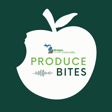
Pests in the Wash Pack
Whether it's mice, rats, birds, or rabbits, many growers struggle with managing pests on the farm. In this episode, Phil Tocco, a Produce Safety Educator with MSU Extension, and Emily Hale, a Produce Safety Technician with the Blue Water Conservation District, give some advice on how to keep these pests under control.
Additional Resources
Animals in Production Areas – Article by Emily Hale
Funding for this podcast was made possible in part by the Food and Drug Administration through grant PAR-16-137. The views expressed in the posted materials do not necessarily reflect the official policies of the Department of Health and Human Services, nor does any mention of trade names, commercial practices or organization imply endorsement by the United States Government.

